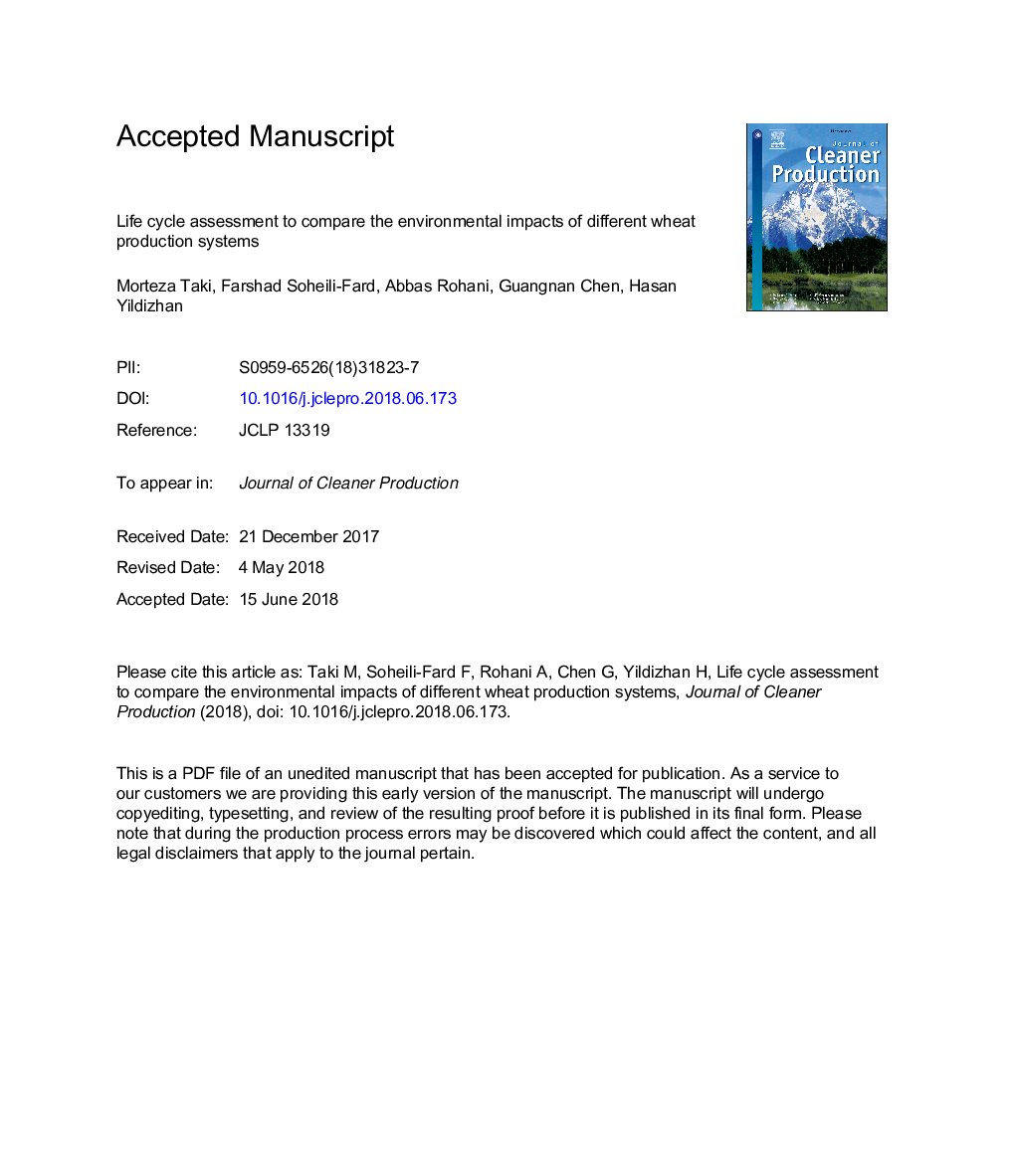| کد مقاله | کد نشریه | سال انتشار | مقاله انگلیسی | نسخه تمام متن |
|---|---|---|---|---|
| 8093763 | 1522056 | 2018 | 25 صفحه PDF | دانلود رایگان |
عنوان انگلیسی مقاله ISI
Life cycle assessment to compare the environmental impacts of different wheat production systems
ترجمه فارسی عنوان
ارزیابی چرخه زندگی برای مقایسه اثرات زیست محیطی مختلف سیستم های تولید گندم
دانلود مقاله + سفارش ترجمه
دانلود مقاله ISI انگلیسی
رایگان برای ایرانیان
کلمات کلیدی
کشاورزی پایدار، تولید گندم، مصرف انرژی، تجزیه و تحلیل محیطی،
موضوعات مرتبط
مهندسی و علوم پایه
مهندسی انرژی
انرژی های تجدید پذیر، توسعه پایدار و محیط زیست
چکیده انگلیسی
The share of fossil-based resources in the implementation of agricultural activities in Iran is very high. In this context, it is important to determine the environmental impacts of energy use in agricultural activities. The purpose of this study was to evaluate and compare the energy consumption and total environmental impacts of irrigated and rainfed wheat production in central Iran, Mahyar plain. For this purpose, data were collected from 120 irrigated and 90 rainfed wheat farms in three different farm size (<2â¯ha, 2-4â¯ha and more than 4â¯ha), through questionnaires and site visits. In this study, standard ISO life cycle assessment methodology was used to evaluate the total impact of all consuming inputs on environmental pollution and show the main hotspot in the production chain. Results of energy analyses showed that large farms used more energy per unit of farm land than that of small farms. Farmers also used higher input energy for irrigated wheat in comparison with rainfed system. The overall energy use efficiency for per unit farm of irrigated wheat production was only half of rainfed wheat production. Results of Life Cycle Assessment (LCA) models show that rainfed wheat actually produced more pollution than irrigated wheat production because of lower yield in ha. In this study, the rate of Abiotic Depletion (AD) and Acidification (AC) impact were 0.002-0.003â¯kg Sb eq and 8.991-11.863â¯kg SO2 eq for wheat production (irrigated and reainfed), respectively. Also the Ozone Layer Depletion (OLD) and Photochemical Oxidation (PO) were calculated 0.00002-0.00004â¯kg CFC11 eq and 0.145-0.174â¯kg C2H4 eq for wheat production (irrigated and reainfed), respectively. The results showed that the main hotspots for irrigated and rainfed wheat production were chemical fertilizers and diesel fuel. Based on the results, it is suggested to use more intensive cropping systems (such as solar greenhouse) to decrease the intensity of input energy and increase the output level of productions with minimum environmental pollution.
ناشر
Database: Elsevier - ScienceDirect (ساینس دایرکت)
Journal: Journal of Cleaner Production - Volume 197, Part 1, 1 October 2018, Pages 195-207
Journal: Journal of Cleaner Production - Volume 197, Part 1, 1 October 2018, Pages 195-207
نویسندگان
Morteza Taki, Farshad Soheili-Fard, Abbas Rohani, Guangnan Chen, Hasan Yildizhan,
